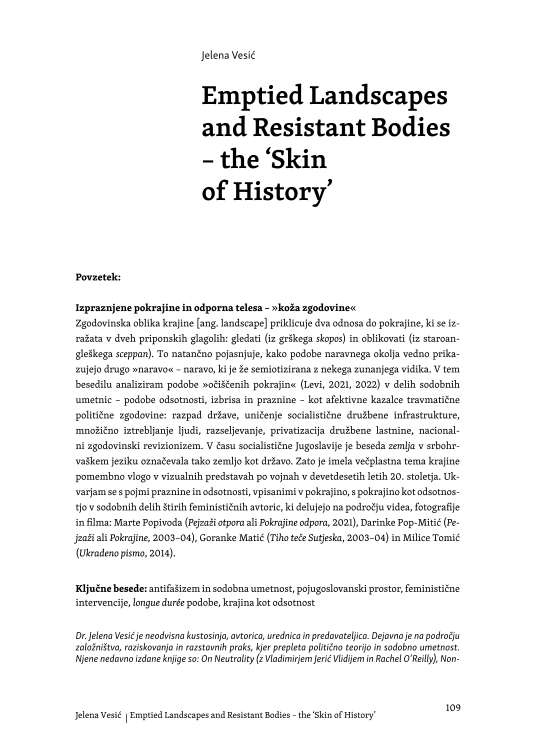The historical form of the word landscape evokes two distinct relations to the land, expressed in two suffixed verbs: ‘to look at’ (derived from Greek skopein) and ‘to shape’ (derived from Old English sceppan). It explains exactly how images of the natural environment always display a ‘second nature’– the nature that is already semiotised from some external point of view. I analyse in this text the images of “cleansed landscapes” (Levi, 2021, 2022) in the works of contemporary female artists – images of absence, erasure and emptiness – as affective pointers to traumatic political histories: dissolution of the state and socialist social infrastructure, the mass extermination of people, displacement, privatisation of social property, and national historical revisionism. In socialist Yugoslavia, in the Serbo-Croatian language the word zemlja signified both the land (the soil) and the state. The layered topic of landscape therefore played a significant role in visual representations after the wars of the 1990s. In this article I engage with the notions of emptiness and absence inscribed in the landscape and with the landscape-as-absence in the contemporary works of four feminist authors working in video, photography and film: Marta Popivoda (Pejzaži otpora (Landscapes of Resistance), 2021), Darinka Pop-Mitić Pejzaži (Landscapes), 2003–04), Goranka Matić (Tiho teče Sutjeska (Softly Flows the Sutjeska), 2003–04), and Milica Tomić (Ukradeno pismo (The Purloined Letter), 2014).




